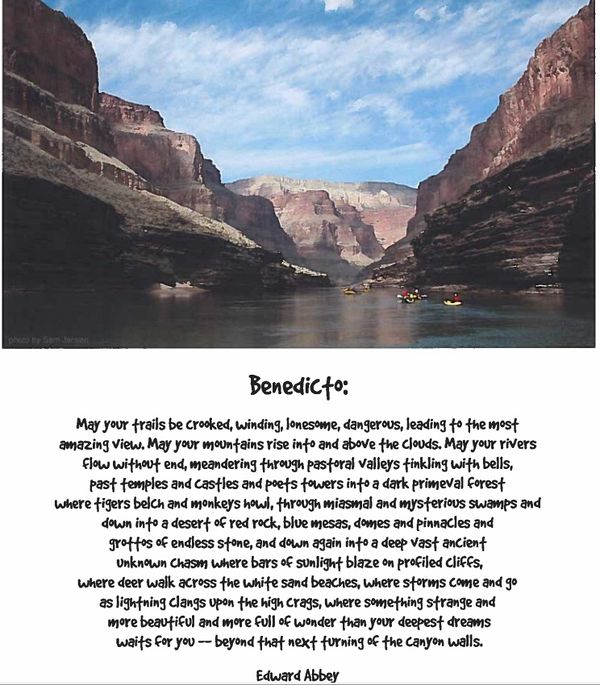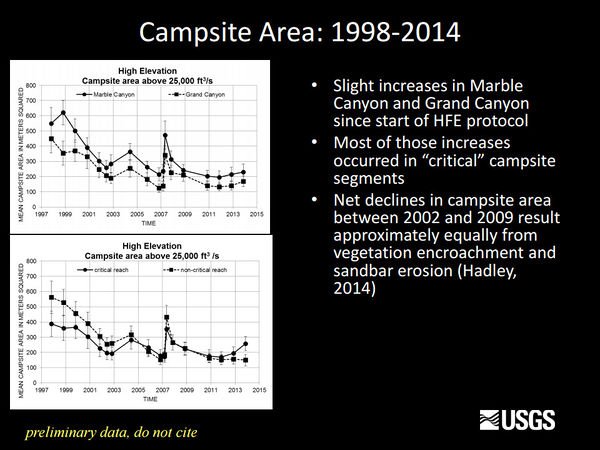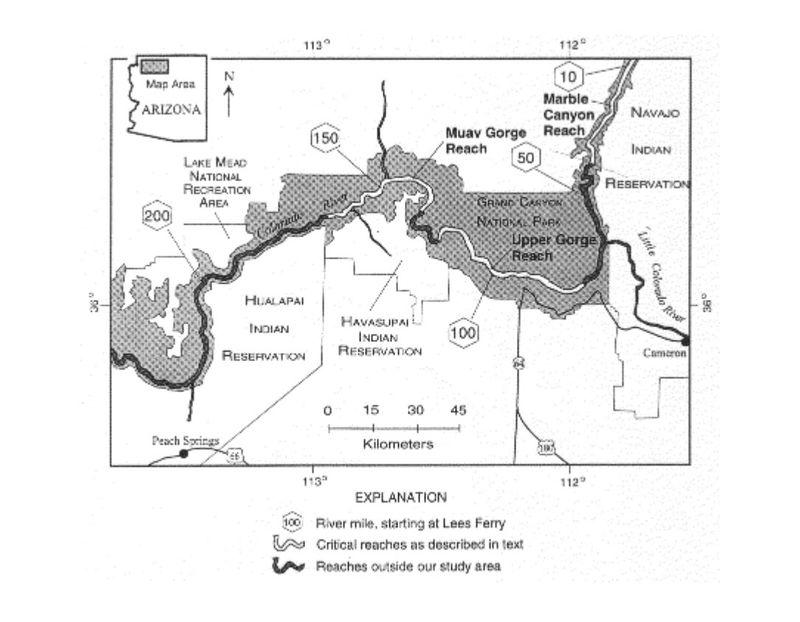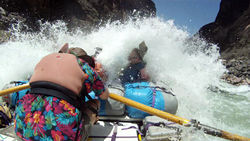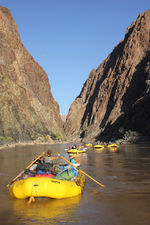Difference between revisions of "RECREATION"
Cellsworth (Talk | contribs) |
Cellsworth (Talk | contribs) |
||
| Line 79: | Line 79: | ||
[[File:CampsiteArea 1998 2014.jpg|center|600px]] | [[File:CampsiteArea 1998 2014.jpg|center|600px]] | ||
| + | |- | ||
| + | ! <h2 style="margin:0; background:#cedff2; font-size:120%; font-weight:bold; border:1px solid #a3b0bf; text-align:left; color:#000; padding:0.2em 0.4em;"> Causal factors for loss of campsite area </h2> | ||
| + | |- | ||
| + | |style="color:#000;"| | ||
| + | |||
| + | There were two primary drivers responsible for the net loss in campsite area — (1) increases and decreases in campsite area as a result of deposition and erosion associated with controlled floods and regular dam operations and (2) long-term declines in campsite area due to vegetation encroachment. Gains and losses in campsite area associated with topographic change can cancel each other out, whereas vegetation change, for the most part, only leads to losses in campsite area. In terms of net change, vegetation encroachment contributed to 47 percent of the overall net loss in campsite area, and topographic change contributed to 53 percent of the overall net loss in campsite area. | ||
| + | |||
| + | Controlled floods can lead to increases in campsite area and are currently the only management strategy used to improve campsites along the Colorado River corridor. However, erosion of flood-deposited sandbars during normal dam operations following controlled floods causes these increases in campsite area to be short lived. At the same time, vegetation cover continues to increase, resulting in the progressive decline of campsite area. | ||
| + | |||
| + | One potential strategy to increase campsite area more often is more frequent implementation of controlled floods to build sandbars. This strategy was initiated by the Bureau of Reclamation in 2012 by the adoption of a high-flow experimental protocol. This protocol allows for the implementation of a controlled flood every year, provided there is sufficient sand supplied by the Paria River (Bureau of Reclamation, 2012). Preliminary findings indicate that the protocol is resulting in larger sandbars (Grams and others, 2015). However, there is not always a direct correlation between increases in sandbar size and increases in campsite area. Whether this strategy leads to increases in campsite area that meet the management objectives set forth by the Glen Canyon Dam Adaptive Management Program for increasing the size of campsite area in critical and noncritical reaches remains uncertain. | ||
| + | |||
| + | Removal of vegetation may be another viable strategy for increasing the size of campsite area. Although most vegetation expansion is occurring in noncritical reaches, these sites tend to be larger in size and more numerous along the river corridor. Physically removing vegetation at these sites would likely accomplish little in terms of increasing recreational carrying capacity, because many of these sites can still accommodate large river groups despite having increases in vegetation cover. Instead, targeting smaller sites in critical reaches and focusing on removal of groundcover shrubs such as arrowweed and camelthorn (and (or) removal of tamarisk that is impacted by tamarisk beetle herbivory) would likely be the most practical and successful vegetation removal strategy. [https://doi.org/10.3133/sir20175096] | ||
|- | |- | ||
| − | ! <h2 style="margin:0; background:#cedff2; font-size:120%; font-weight:bold; border:1px solid #a3b0bf; text-align:left; color:#000; padding:0.2em 0.4em;"> Critical Reaches | + | ! <h2 style="margin:0; background:#cedff2; font-size:120%; font-weight:bold; border:1px solid #a3b0bf; text-align:left; color:#000; padding:0.2em 0.4em;"> Critical Reaches </h2> |
|- | |- | ||
|style="color:#000;"| | |style="color:#000;"| | ||
| + | |||
| + | [[File:CriticalReaches.jpg|thumb|center|800px| [https://www.gcmrc.gov/library/reports/cultural/Recreation/01WRGR0007/AAB%202000.pdf Changes to Grand Canyon Camping Beaches, Year 2000: Annual Report of Repeat Photography by Grand Canyon River Guides, Inc. (Adopt-a-Beach Program)] ]] | ||
*Marble Canyon (river miles 9-41) | *Marble Canyon (river miles 9-41) | ||
*Upper Gorge (river miles 71-114) | *Upper Gorge (river miles 71-114) | ||
*Muav Gorge (river miles 131-165) | *Muav Gorge (river miles 131-165) | ||
| − | |||
| − | |||
|} | |} | ||
Revision as of 10:35, 8 August 2018
|
|
Colorado River RecreationSandbars have been used as campsites by river runners and hikers since the first expeditions to the region more than 100 years ago. Because the Colorado River is dominated by bedrock cliffs and steep talus slopes, sandbars provide unique areas along the river that are flat, relatively free of vegetation, easily accessible by river runners, and able to withstand high usage with negligible impact. These campsites continue to be an important part of the recreational experience for the more than 25,000 hikers and river runners that visit the Colorado River corridor each year. [1] LTEMP Resource Goal for Recreational ExperienceMaintain and improve the quality of recreational experiences for the users of the Colorado River Ecosystem. Recreation includes, but is not limited to, flatwater and whitewater boating, river corridor camping, and angling in Glen Canyon. Desired Future Condition for for RecreationRiver Recreation in Grand Canyon National Park The Recreation DFCs are meant to describe goals and objectives for human use of the Colorado River Ecosystem (CRE) through GCNRA and the GCNP. They are intended to include not only traditional recreational activities such as whitewater rafting, camping, and fishing, but also such things as educational activities, spiritual engagement, and other appropriate activities and values. Grand Canyon and Glen Canyon offer many ways for people to experience, appreciate, and learn from them, even to those who never visit in person. |
| --- |
--- |
--- |
|---|
|
